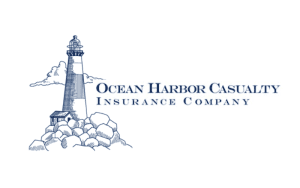California Insurance: Intervening, Interfering

In insurance circles Florida and California have the dubious distinction of being perennial problem children for home and auto insurance. In both states insurance markets have been severely disrupted by unique factors unknown in any other state. In Florida, the disruptor was litigation gone wild. Florida is home to “nearly 80 percent” of the entire nation’s total homeowners insurance lawsuits. In California, the disruption is the legacy of a ballot box proposal, Proposition 103, in place since 1988. For 36 years this law has straitjacketed insurers who do business in the state so severely that many soured on California, either choosing not to write business in the state or limiting how much business they write there.
Florida’s insurance market is finally on the mend, as the result of recently passed tort reforms restoring health to the market, as evidenced by the establishment of eleven new Florida insurers. In California, by contrast, the market continues to be mired by restrictions spawned by Proposition 103.
Proposition 103’s introduction of an elected insurance commissioner, rollback of personal lines rates, prior rate approval, and prohibiting reinsurance cost and forward-looking models in ratemaking are familiar to insurance pros. One feature of Prop 103 less well understood is the role of intervenors.
What’s an Intervenor?
If an insurer in California seeks a rate increase greater than 6.9 percent, a hearing may be held at which “intervenors,” typically consumer advocates, are allowed to challenge insurers’ rate change requests. The insurance company seeking the rate change is responsible for paying the intervenor’s fees, which can be in the millions of dollars, as specified in Cal. Ins. Code § 1861.10.
From 2003 to 2023, insurers paid $23.1 million to intervenors. The lion’s share of intervenors’ fees went to one firm, Consumer Watchdog, formerly called the Foundation for Taxpayer and Consumer Rights. Other intervenors have included Consumer Federation of California, Consumers’ Union, Southern Christian Leadership Conference, the Greenlining Institute, United Policyholders et al. In the same period, Consumer Watchdog alone was paid $18.4 million by insurers, while other intervenors collected $4.7 million collectively. Note that in close to half of the 20-year period, Consumer Watchdog was the only intervenor.
Insurers that got tagged for the highest intervenor bills included Allstate, Farmers, State Farm and Mercury. In 2017 one intervention involving State Farm generated fees in excess of $1.9 million. If this represented legal work done by an attorney billing California lodestar fees of $400 per hour, the attorney would have had to work 2.5 years on that single intervention. In a petition for a 2023 hearing pushing back on a rate increase at Farmers Insurance, Consumer Watchdog disclosed that its intervention budget included, among other charges, $595 per hour for its senior staff attorney, $350 per hour for its staff attorney, $695 per hour for work of Harvey Rosenfield, of Counsel, as well as 200 hours at $915 per hour for a consulting actuary, totaling close to $400,000. It is noted that Rosenfield was the author of Prop 103.
Damage Wrought by Intervenors
Proposition 103 has artificially suppressed rates by uncoupling rate from risk. Insurers’ ratemaking process involves analysis of expected losses to calculate loss costs. If policies are issued in high-risk areas with artificially low premiums that are inadequate for the risk, this sends a signal to homeowners that their risk is adequately covered by the rate, but it’s not. California statute holds that insurance rates should not be inadequate. In addition to violating its own statute, this has led to the peculiar phenomenon of California having lower insurance rates than the national average, even though California is home to numerous perils other states do not experience. These include mudslides, wildfires, earthquakes, floods, and riots.
The national average annual premium for homeowners’ insurance for $300,000 in dwelling coverage is $2,258, close to twice the average in California of $1,250, making California among the nine cheapest markets for homeowners’ insurance.
Average cost of Homeowners Insurance by State for $300,000 in Dwelling Coverage (in $)
AL
3,140
MT
2,605
AK
1,160
NE
4,135
AZ
2,135
NV
1,290
AR
3,355
NH
1,000
CA
1,250
NJ
1,150
CO
3,820
NM
1,595
CT
1,575
NY
1,715
DE
860
NC
1,975
FL
2,625
ND
2,445
GA
2,345
OH
1,390
HI
515
OK
5,495
ID
1,510
OR
1,255
IL
2,060
PA
1,410
IN
1,975
RI
2,070
IA
2,215
SC
2,250
KS
3,570
SD
2,810
KY
2,190
TN
2,435
LA
2,240
TX
4,400
ME
1,075
UT
1,140
MD
1,700
VT
870
MA
1,545
VA
1,445
MI
1,785
WA
1,190
MN
2,375
WV
1,600
MS
3,475
WI
1,300
MO
2,905
WY
1,555
(Source: Bankrate)
The above data suggest that Proposition 103, including intervenor interference, has prevented insurance companies from selling their product at risk-adjusted rates. This is price control, anathema to those who favor free-market policies, where prices are determined by supply and demand forces, rather than government-imposed prices. In a government-controlled price-fixed economy, price signals that would otherwise incentivize consumers to pursue risk management and pay risk-adjusted rates are not sent. In today’s regulation-cutting environment, this may be just the right time to shed light on the legacy of Proposition 103 and consider sending it into the dustbin of history, benefiting insurance buyers and providers.
Topics
California
The most important insurance news,in your inbox every business day.
Get the insurance industry’s trusted newsletter





